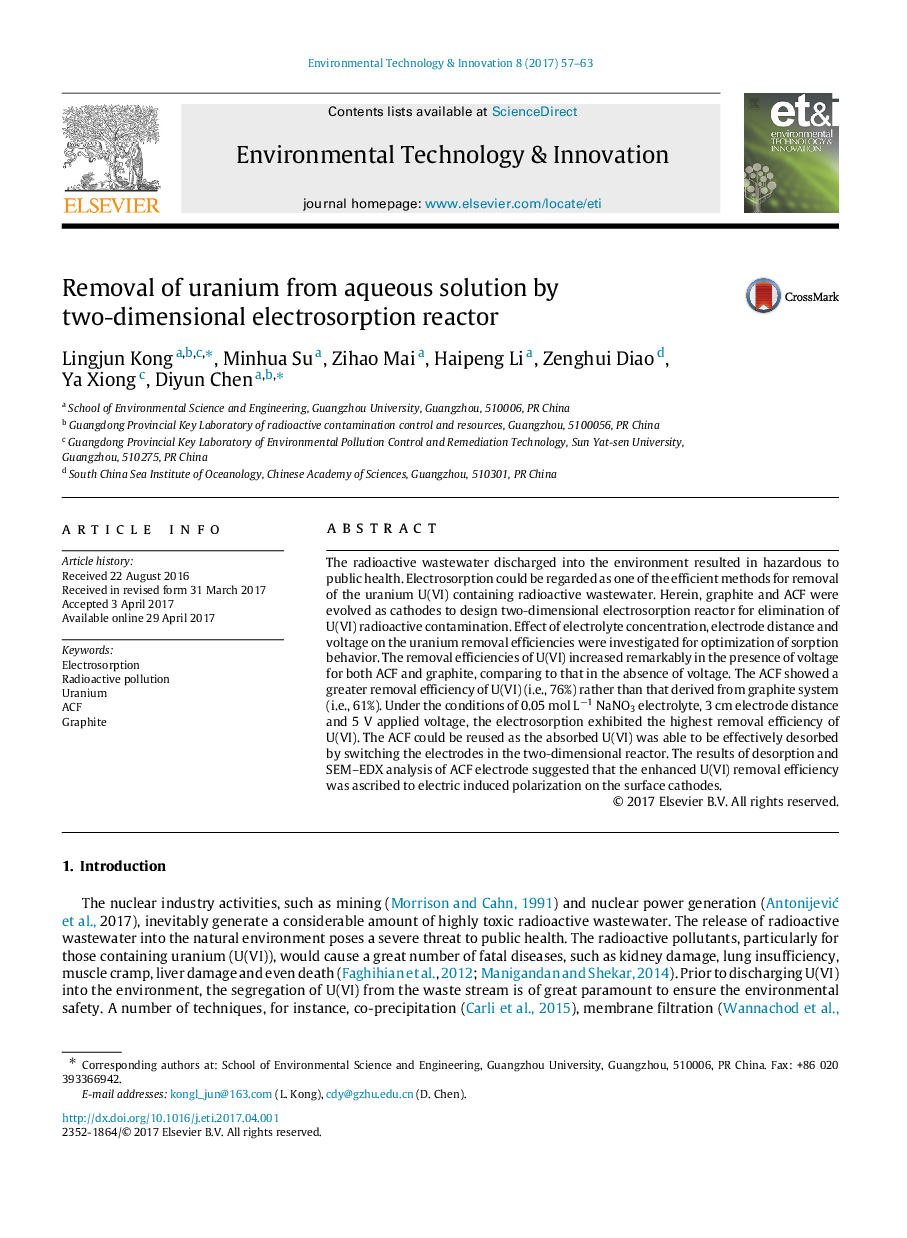| Article ID | Journal | Published Year | Pages | File Type |
|---|---|---|---|---|
| 5749590 | Environmental Technology & Innovation | 2017 | 7 Pages |
Abstract
The radioactive wastewater discharged into the environment resulted in hazardous to public health. Electrosorption could be regarded as one of the efficient methods for removal of the uranium U(VI) containing radioactive wastewater. Herein, graphite and ACF were evolved as cathodes to design two-dimensional electrosorption reactor for elimination of U(VI) radioactive contamination. Effect of electrolyte concentration, electrode distance and voltage on the uranium removal efficiencies were investigated for optimization of sorption behavior. The removal efficiencies of U(VI) increased remarkably in the presence of voltage for both ACF and graphite, comparing to that in the absence of voltage. The ACF showed a greater removal efficiency of U(VI) (i.e., 76%) rather than that derived from graphite system (i.e., 61%). Under the conditions of 0.05 mol Lâ1 NaNO3 electrolyte, 3 cm electrode distance and 5 V applied voltage, the electrosorption exhibited the highest removal efficiency of U(VI). The ACF could be reused as the absorbed U(VI) was able to be effectively desorbed by switching the electrodes in the two-dimensional reactor. The results of desorption and SEM-EDX analysis of ACF electrode suggested that the enhanced U(VI) removal efficiency was ascribed to electric induced polarization on the surface cathodes.
Related Topics
Life Sciences
Environmental Science
Environmental Chemistry
Authors
Lingjun Kong, Minhua Su, Zihao Mai, Haipeng Li, Zenghui Diao, Ya Xiong, Diyun Chen,
